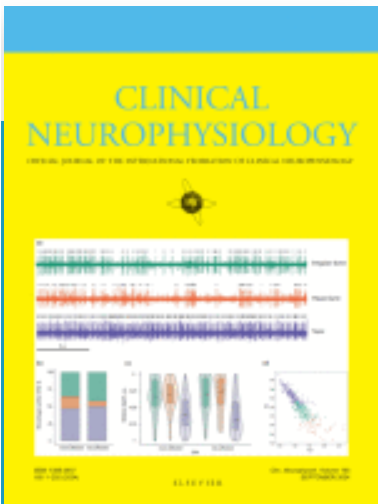
Clinical neurophysiology
2023 Dec:156:28-37. doi: 10.1016/j.clinph.2023.08.022. Epub 2023 Oct 6.
C Leone, G Di Pietro, Y Salman, E Galosi, G Di Stefano, O Caspani , L Garcia-Larrea, A Mouraux, R-D Treede, A Truini
Abstract
Objective: The N13 component of somatosensory evoked potential (N13 SEP) represents the segmental response of cervical dorsal horn neurons. Neurophysiological studies in healthy participants showed that capsaicin-induced central sensitization causes an increase of the N13 SEP amplitude. Consequently, in human research, this spinal component may serve as a valuable readout of central sensitization. In this study, we wanted to verify if the sensitivity of the N13 SEP for detecting central sensitization is consistent across different experimental pain models inducing central sensitization and secondary hyperalgesia, namely high and low-frequency electrical stimulation (HFS and LFS).
Methods: In 18 healthy participants, we recorded SEP after bilateral ulnar nerve stimulation before and after secondary hyperalgesia was induced through HFS and LFS applied on the ulnar nerve territory of the hand of one side. The area of secondary hyperalgesia was mapped with a calibrated 128-mN pinprick probe, and the mechanical pain sensitivity with three calibrated 16-64-256-mN pinprick probes.
Results: Although both HFS and LFS successfully induced secondary hyperalgesia only LFS increased the amplitude of the N13 SEP.
Conclusions: These findings suggest that the sensitivity of the N13 SEP for detecting dorsal horn excitability changes may critically depend on the different experimental pain models.
Significance: Our results indicate that LFS and HFS could trigger central sensitization at the dorsal horn level through distinct mechanisms, however this still needs confirmation by replication studies.
Keywords: Central sensitization; Experimental pain models; Neuropathic pain; Pain biomarker.
Copyright © 2023 International Federation of Clinical Neurophysiology. Published by Elsevier B.V. All rights reserved.
- PMID: 37856896
- DOI: 10.1016/j.clinph.2023.08.022
